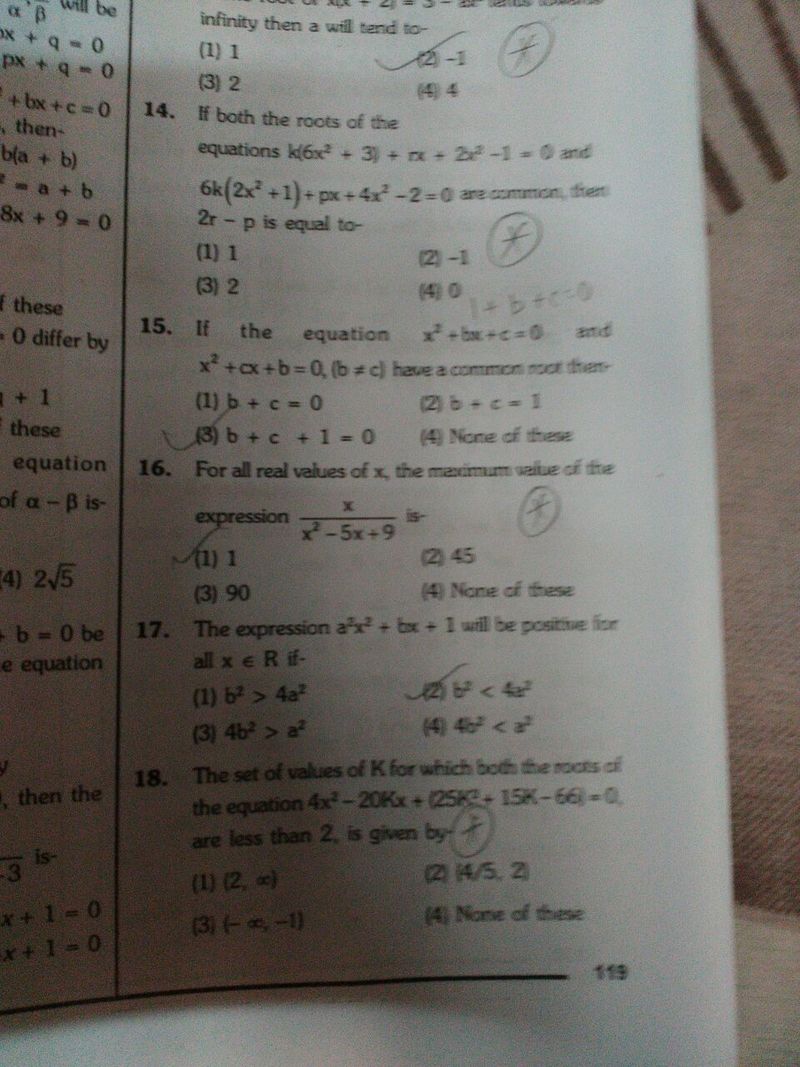Please solve q 16?

2 Answers
i) 1
Explanation:
The question is:
For all real values of
i) 1; ii) 45; iii) 90; iv) None of these.
Could you type it in next time? The photo's a bit hard to read - not all of us have good eyesight. Edit: And in demonstration of this, I originally misread a sign in the question! Fixed now. Apologies for the error - it really isn't very easy for me to read.
To find the extrema of the function, set its derivative to 0.
To characterise the two points found, consider the value of the second function derivative at these points.
By the quotient rule
So
So
Note that
Consider the other extremum now, at
So
We now know that as
the
Thus the answer is " i) 1 ", which maximum value for
Check the solution for sanity by plotting the graph of the function:
graph{x/(x^2-5x+9) [-8.89, 8.885, -4.444, 4.44]}
The answer is
Explanation:
The function is
The domain of
The derivative is calculated with the quotient rule.
The critical points are when
Build a variation chart
The maximum value is
The answer is
graph{x/(x^2-5x+9) [-7.9, 7.9, -3.95, 3.95]}
The function is a maximum when the denominator is a minimum.
The denominator is
The function is
is a maximum when
This is the maximum value.

